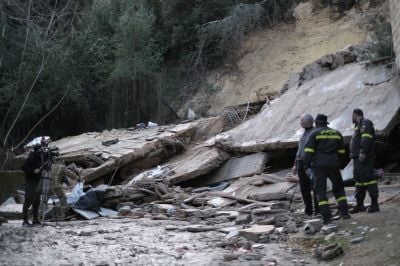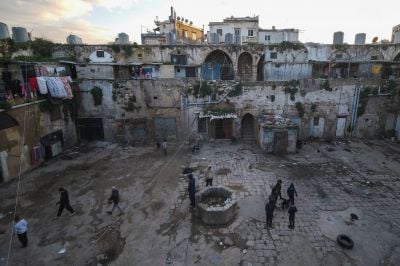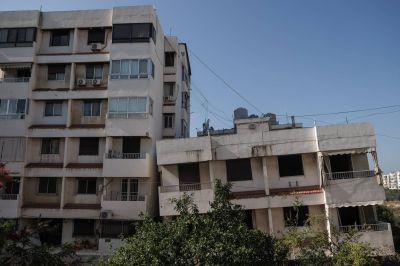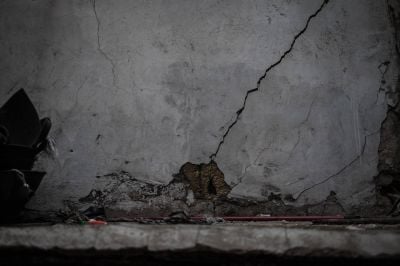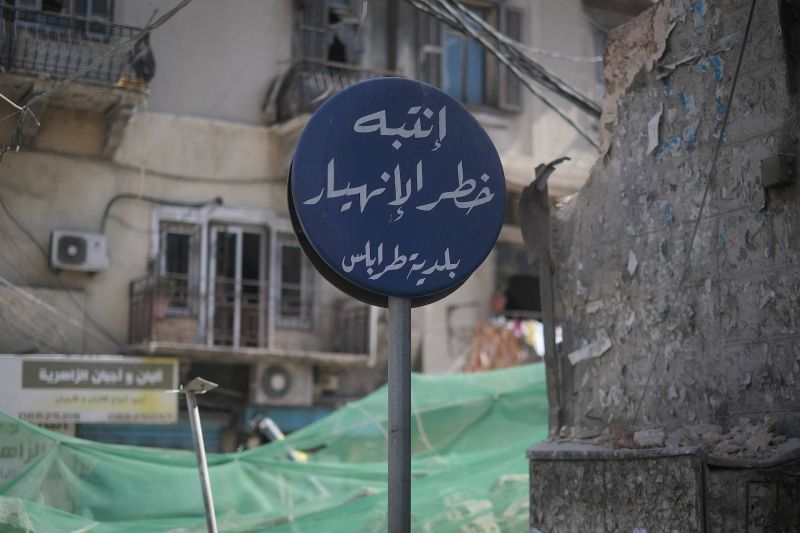
"Caution: Danger of collapse." A sign warns passersby after a dilapidated building collapsed in Tripoli's Zahrieh district in September 2023. (Credit: João Sousa/L'Orient Today/File photo)
BEIRUT — Monday night brought yet another apartment building collapse in Choueifat just south of Beirut, killing at least four people in their homes and leaving several others injured.
It was just the latest in a string of collapses in recent weeks, highlighting poor construction amid increased winter flooding and post-earthquake damage.
According to local authorities, the building was reportedly old and poorly built, raising questions over housing safety across Lebanon.
Here are some key indicators to watch for, according to civil engineer Mohammad Khawwam, who has advocated for people to get their homes checked for structural safety.
Cracks and fissures: Walls or columns exhibiting cracks or fissures suggest structural weaknesses that could lead to collapse. Ceilings with similar defects also raise red flags about the building's stability.
Soha Mneimneh, a member of the Order of Engineers and Architects' (OEA) legislative assembly, noted that “whether a crack is dangerous or not depends on its angle and the location of the crack — if the crack is in the form of a 45-degree angle, it is an indication that the crack is potentially dangerous, especially if it’s in a column.” In other words, if the crack is diagonal, that’s a red flag.
“If [the crack] is purely horizontal or purely vertical, it's most likely not dangerous. It just indicates that there's a small separation between two materials. For example, it can be a crack separating concrete from sandstone,” Mneimneh added.
She noted, however, that reaching out to an expert to inspect the structure is essential in all cases.
Deflections in structure: An abnormal bending or leaning of the building indicates serious structural issues that require immediate attention to prevent collapse.
Unusual sounds: Look out for strange noises emanating from the structure, such as squeaks or rattles, which might signal possible wear or damage to load-bearing components.
Water accumulation: Water pooling in ceilings or walls accelerates corrosion of building materials and heightens the risk of structural failure and collapse.
Expert warnings: Any warnings from structural engineers or construction professionals regarding the building's stability should be taken seriously, as they are trained to identify potential hazards.
To mitigate the risk of collapse, Khawwam suggests the following preventative measures:
Regular maintenance: Building owners should perform regular maintenance to ensure the safety of the structure and building materials.
Structure evaluation: Specialized engineers can be consulted to evaluate the structure periodically and make recommendations to enhance structural integrity.
Improving design and construction: Engineers and contractors must follow meticulous engineering standards and use high-quality materials in construction to reduce the risk of collapse.
What to do if you suspect your building is at risk?
Camille Hashem, an OEA representative, says that according to the public safety law, the responsibility of inspecting a structure and rehabilitating the building, if needed, falls on the owner of that building.
If the owner refuses to follow through, the municipality issues an eviction notice lasting 15 days.
He also noted that any rehabilitation work requires a license from the municipality.
Mneimneh argues that “there's a lot of responsibility on all governmental institutions that are responsible for urban planning and housing, specifically, to intervene in the cases of illegal and informal building projects.”
“There's a need to provide housing alternatives to these people. The system that governs urban planning and housing in Lebanon has been focused on financial gains for the last 30 years, it was very focused on just providing housing loans to middle, sometimes even upper-income people,” she added. “While intervention to low-income people was absent. The state did not build any public housing projects and did not subsidize rent for these individuals.”
Hashem and Mneimneh point out that many engineers and architects, including themselves, have been offering their expertise, to inspect and assess people’s houses pro bono.
Mneimneh, however, highlights that the most vulnerable populations, such as those in informal settlements or the elderly, often lack awareness of such initiatives.
“There is an issue in communicating and reaching out to these people and this population,” she says. “In these cases, there should be an active role of municipalities on the ground, to know exactly who needs what in every building, and what is an urgent matter and where a very urgent intervention should happen.”
“It is the municipality’s responsibility to reach these people,” Hashem agreed. “The municipality knows where each family lives and in which building and, roughly, the state of that building.”
